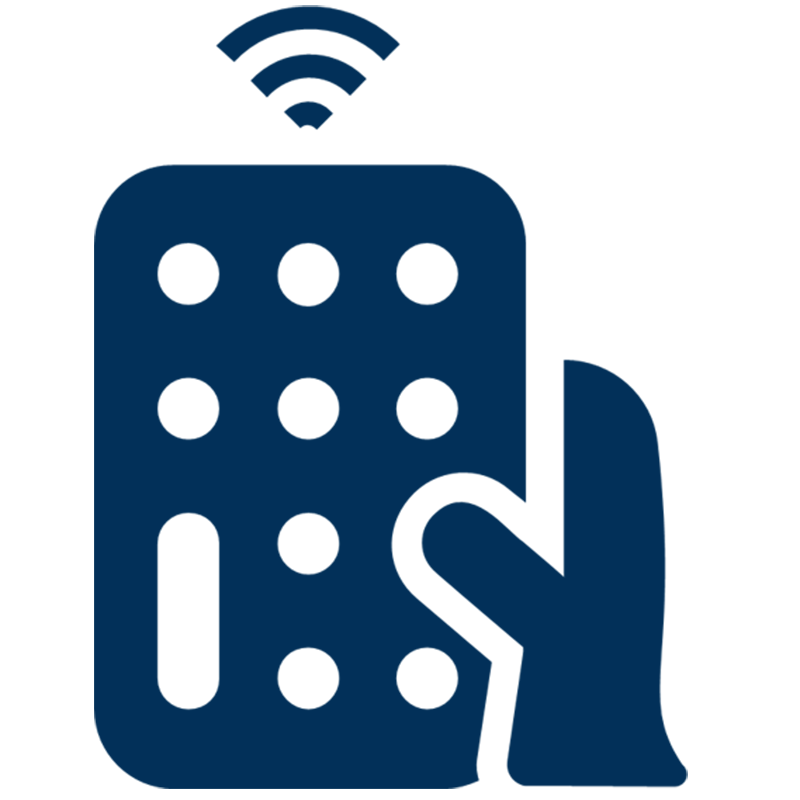Remote Control

Remote control includes a wide range of applications that enable centralized supervision and control over equipment and machinery using sensors to provide operational visibility, a visualization and control application that enables users to communicate orders, and Actuators to control the asset. The ability to effectively operate assets remotely reduces the need for human operators to be on site. Remote control can be applied to asset provided sufficient sensors, transceivers, and Actuators have been installed. For example, remote production control allows users to operate, control and modify output or process parameters. These functions control or operate activity from the speed of the process to regulating operating temperatures to managing basic input/output quantities. Remote starting or stopping, valve controls, pressure controls and current status are all typical forms of control that require connectivity and platforms to manage. Since data sets are large, analytics can also be run to help operators identify areas for improvement, identify trends, and predict events.
Operational Efficiency: Remote control allows businesses to remotely access and control various assets, such as machinery, HVAC systems, and security cameras. This improves operational efficiency by enabling remote troubleshooting, maintenance, and management, reducing downtime and increasing productivity.
Cost Savings: By implementing remote control solutions, businesses can save on travel costs, maintenance expenses, and operational downtime. Remote troubleshooting and diagnostics can be conducted without the need for on-site visits, reducing the need for technician travel and associated expenses.
Operators and Technicians: Operators and technicians benefit from remote control capabilities as they can remotely monitor and control equipment and systems, perform diagnostics, and troubleshoot issues without being physically present on-site. This improves their efficiency and enables faster response times to equipment failures or malfunctions.
Managers: Managers benefit from remote control solutions by gaining real-time visibility and control over operations, even when they are not physically present on-site. This allows them to make data-driven decisions, optimize resource allocation, and ensure compliance with operational guidelines and safety regulations.
IoT Devices: IoT devices, such as sensors, actuators, and controllers, enable remote monitoring and control of equipment and systems. These devices collect data from the physical environment and can be remotely controlled to perform specific actions or tasks.
Connectivity Technologies: Connectivity technologies, such as cellular networks, Wi-Fi, Bluetooth, and LoRaWAN (Long Range Wide Area Network), provide communication channels for remote control solutions. These technologies enable data transmission between remote devices, systems, and control centers, ensuring reliable and secure connectivity.
Real-Time Monitoring Data: Remote control solutions collect real-time data from sensors, devices, and systems, providing insights into equipment status, performance metrics, and environmental conditions. This data allows operators and technicians to monitor operations remotely and take timely actions to prevent or address issues.
Historical Data Analysis: Remote control solutions also store historical data about equipment performance, maintenance records, and operational trends. Analyzing this data helps businesses identify patterns, optimize maintenance schedules, and improve overall operational efficiency over time.
Hardware Installation: Deploying remote control solutions may require installing sensors, actuators, controllers, and communication devices on equipment and systems. This hardware enables remote monitoring and control capabilities and may vary depending on the type of equipment and application.
Software Integration: Integrating remote control software with existing systems, such as SCADA (Supervisory Control and Data Acquisition) systems, IoT platforms, and enterprise software solutions, ensures seamless data exchange and interoperability. This integration allows businesses to consolidate data from multiple sources and streamline remote control operations.


